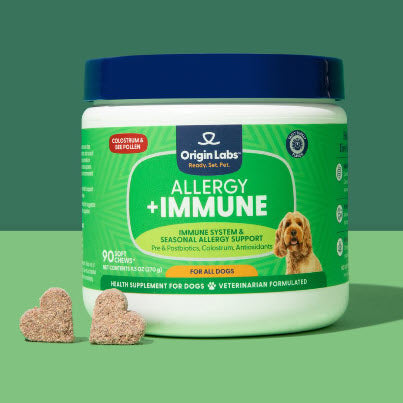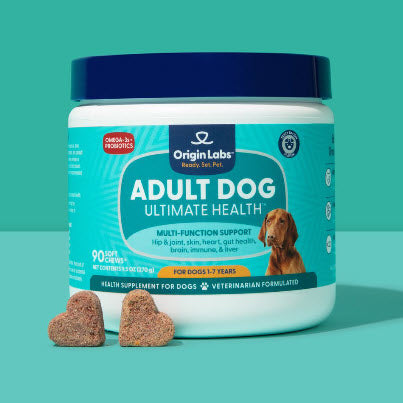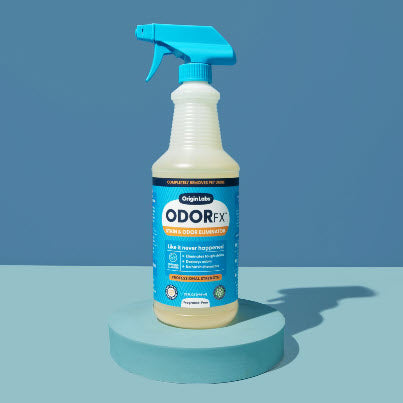Introduction
Curious about whether dogs can eat fish sticks? You're not alone. Many dog owners question the safety and nutritional benefits of various human foods for their furry friends. Fish sticks, a popular snack for humans, often come under scrutiny when it comes to our pets.
Understanding what foods are safe for dogs to eat is crucial. Dogs have different dietary needs compared to humans, and some foods that are harmless or beneficial to us can be harmful or even toxic to them.
Common Questions About Feeding Fish Sticks to Dogs:
- Can dogs eat fish sticks?
- Are fish sticks nutritious for dogs?
- Can the ingredients in fish sticks harm my dog?
- What are the potential benefits and risks?
This article delves into these common queries, exploring the truth about dogs and fish sticks. By the end, you'll have a clearer understanding of whether or not dogs can eat fish sticks.
When it comes to meeting your dog's nutritional needs, it's essential to provide them with a well-balanced diet that caters to their specific life stage. For instance, if you have an adult dog, you might want to consider incorporating adult dog food, which includes health supplements tailored for adult dogs into their diet. On the other hand, if your furry friend is entering their golden years, senior dog food that supports joint and hip health may be more appropriate.
Remember, the key is to prioritize your dog's well-being by offering them safe and nourishing meals that align with their unique requirements.
The Nutritional Needs of Dogs
Understanding the nutritional needs of dogs is crucial for their health and well-being. A dog's diet should be balanced and provide all the essential nutrients necessary to support their growth, energy levels, and overall health.
Essential Nutrients for Dogs
Dogs require a variety of nutrients to maintain optimal health:
- Proteins: Vital for muscle development, tissue repair, and immune function.
- Fats: Provide a concentrated source of energy and are important for skin and coat health.
- Carbohydrates: Offer a quick energy source and support intestinal health.
- Vitamins and Minerals: Necessary for various metabolic functions and maintaining strong bones and teeth.
A balanced diet, such as those found in high-quality commercial dog foods like this one, ensures that dogs receive these nutrients in the right proportions. Neglecting any of these components can lead to deficiencies or imbalances that may affect a dog's health.
Protein: The Building Block
Protein plays a central role in a dog's diet. It supports:
- Muscle Development: Essential for growth, especially in puppies.
- Tissue Repair: Helps heal wounds and regenerate cells.
- Immune Function: Strengthens the immune system to fight off infections.
Sources of high-quality protein include meat, fish, eggs, and certain plant-based options like beans and lentils. For growing puppies, supplements such as those offered by Origin Labs can help support their health.
Importance of a Balanced Diet
A balanced diet tailored to your dog's specific needs promotes:
- Healthy Weight Management: Prevents obesity-related issues.
- Energy Levels: Ensures they have enough energy for daily activities.
- Longevity: Contributes to a longer, healthier life.
Feeding your dog appropriately according to their life stage (puppy, adult, senior) and any specific dietary requirements will ensure they thrive.
By understanding these nutritional fundamentals, you can make informed decisions about what foods are safe and beneficial for your dog’s diet. This knowledge becomes particularly relevant when considering the safety of feeding them specific human foods like fish sticks.
Benefits and Risks of Fish for Dogs
Examining the Nutritional Value of Fish for Dogs
Fish can be a nutritious addition to a dog's diet. It's rich in protein, vitamins, and minerals that are essential for maintaining health. Here are some key nutritional components found in fish:
- Protein: Fish is an excellent source of high-quality protein, which is crucial for muscle development and repair.
- Vitamins: Includes Vitamin D, B-complex vitamins like B6 and B12, which support energy metabolism and neurological function.
- Minerals: Such as selenium, iodine, and zinc, important for various metabolic processes.
Potential Benefits of Omega-3 Fatty Acids Found in Fish
Fish is also renowned for its omega-3 fatty acids, particularly EPA (eicosapentaenoic acid) and DHA (docosahexaenoic acid). These fatty acids provide several benefits:
- Joint Health: Omega-3s have anti-inflammatory properties that can help reduce joint inflammation and pain, particularly beneficial for older dogs or those with arthritis.
- Brain Health: DHA is crucial for brain health and cognitive function. It supports brain development in puppies and maintains cognitive function in senior dogs.
- Skin and Coat: Omega-3s contribute to healthy skin and a shiny coat by reducing dry skin conditions and improving overall skin health.
Identifying the Potential Hazards Associated with Feeding Fish Sticks to Dogs
While fish itself can be beneficial, feeding commercially prepared fish sticks to dogs introduces potential risks due to additional ingredients and preparation methods. Some concerns include:
- Harmful Ingredients: Fish sticks often contain additives such as preservatives, flavor enhancers, salt, and sugar. These ingredients can be harmful to dogs if consumed in large quantities.
- Example: Sodium can lead to salt poisoning, causing symptoms like vomiting, diarrhea, tremors, or even seizures.
- Breading and Oils: The breading on fish sticks is typically made from refined carbohydrates that offer little nutritional value. Additionally, the frying process uses oils that can be too rich or unhealthy for dogs.
- Impact: Excessive oils can cause digestive issues like pancreatitis or contribute to obesity.
Understanding these factors helps pet owners make informed decisions about incorporating fish into their dog's diet safely. To further explore the benefits of omega-3 fatty acids and how they can be obtained naturally without the risks associated with fish sticks, fish oil supplements are a viable alternative for ensuring your dog receives these essential nutrients.
Can Dogs Safely Consume Fish Sticks?
Whether fish sticks are safe for dogs to eat is a common question among pet owners. While fish itself can be a nutritious addition to a dog's diet, fish sticks come with several concerns.
Occasional Consumption and Risks
Occasionally feeding fish sticks to your dog may not pose significant immediate health risks, but there are important factors to consider:
- Ingredients: Fish sticks often contain additives, preservatives, and artificial flavors that aren't beneficial for dogs.
- Sodium Levels: High sodium content in processed foods can be harmful to dogs, leading to issues like dehydration or even sodium ion poisoning in extreme cases.
- Portion Control: Small amounts might not cause harm, but regular consumption or large quantities can lead to nutritional imbalances.
Impact of Breading and Excessive Oils
The breading and oils used in fish sticks can further complicate their suitability for dogs:
- Breading: Typically made from refined grains and sometimes containing spices or seasonings that may upset a dog’s stomach. Ingredients like garlic or onion powder are toxic to dogs.
- Oils: Fish sticks are usually fried in oils high in unhealthy fats. Consuming these can lead to gastrointestinal distress such as diarrhea or vomiting. Over time, high-fat diets contribute to obesity and pancreatitis.
Digestibility Concerns
Fish sticks are less digestible compared to plain fish due to their processing:
- Digestive System Stress: The combination of breading and oils makes fish sticks harder for dogs to digest, potentially leading to digestive issues.
- Absorption of Nutrients: The presence of excessive oils might interfere with the absorption of essential nutrients, reducing the overall nutritional benefit of the fish.
Offering fish sticks occasionally might not cause severe harm, but it's essential to weigh these risks.
Alternatives to Fish Sticks for Treating Your Dog
Offering healthy treats for dogs instead of fish sticks can greatly benefit their overall health. Here are some nourishing alternatives to consider:
Nutritious Treat Options
- Fresh Fish: Opt for fresh fish like salmon or sardines, which are rich in omega-3 fatty acids. Ensure the fish is cooked and deboned to avoid any choking hazards.
- Fruits and Vegetables: Dogs can enjoy a variety of fruits and vegetables such as carrots, blueberries, and sweet potatoes. These are packed with vitamins and minerals.
- Lean Meats: Cooked chicken or turkey can be a great source of protein. Always remove any bones and skin before serving.
Homemade Fish-Based Dog Treat Recipe
Creating homemade treats allows you to control the ingredients, ensuring your dog gets a nutritious snack. Here’s a simple recipe:
Ingredients
- 1 cup of cooked, flaked fish (salmon or whitefish)
- 1 egg
- 1 cup whole wheat flour
- 1/2 cup rolled oats
- 1/4 cup water
Instructions
- Preheat Oven: Set your oven to 350°F (175°C).
- Mix Ingredients: In a large bowl, combine the flaked fish, egg, whole wheat flour, rolled oats, and water. Mix until a dough forms.
- Shape Treats: Roll out the dough on a lightly floured surface to about 1/4 inch thickness. Use cookie cutters or cut into small squares.
- Bake: Place the treats on a parchment-lined baking sheet. Bake for 20-25 minutes or until golden brown.
- Cool: Let the treats cool completely before serving them to your dog.
These homemade treats are not only healthier but also free from harmful additives found in many commercial products.
Exploring these alternatives ensures that your dog receives nourishment without the risks associated with processed foods like fish sticks.
Feeding Guidelines: How to Incorporate Fish into Your Dog's Diet
Feeding fish to dogs can be a healthy addition to their diet when done correctly. Here are some best practices to follow:
Best Practices for Feeding Fish to Dogs
- Choose the Right Type of Fish: Opt for fish that are low in mercury and other contaminants such as salmon, sardines, and mackerel.
- Preparation Methods: Always cook fish thoroughly before serving it to your dog. Avoid seasoning, oils, or any additives that could be harmful. Boiling or baking are the best methods.
- Remove Bones: Fish bones can pose a serious choking hazard and cause internal injuries. Ensure all bones are removed before feeding fish to your dog.
- Portion Control: Fish should be treated as an occasional addition rather than a staple. Aim for fish to make up no more than 10% of your dog's total diet.
Deciding how often to feed fish to your dog is crucial for maintaining a balanced diet:
- Occasional Treats: Fish can be given as a treat once or twice a week. This frequency allows your dog to benefit from the nutrients in fish without risking overconsumption of certain elements like mercury.
- Serving Size: For small dogs, a portion size could be one or two tablespoons of cooked, deboned fish. For larger breeds, you may increase this amount but keep it within the 10% guideline of their total caloric intake.
Always consult with your veterinarian before making significant changes to your dog's diet. They can provide guidance tailored to your pet's specific health needs and dietary requirements. By following these guidelines, you can safely incorporate fish into your dog’s diet while ensuring they receive all necessary nutrients without compromising their health.
Conclusion
It's important to prioritize your dog's health by making informed decisions about their diet. While fish can be a nutritious addition due to its high protein content and omega-3 fatty acids, fish sticks are less ideal. The breading, excessive oils, and potential additives in fish sticks can pose risks to your dog's well-being.
Key Points to Remember:
- Health First: Always prioritize your dog’s health by choosing natural and wholesome food options.
- Consult a Veterinarian: Before introducing new foods like fish or fish-based treats, consult with a veterinarian for personalized dietary recommendations.
Veterinarians can provide the best advice tailored to your dog's specific needs, ensuring they receive the nutrients necessary for a healthy and happy life.
FAQs (Frequently Asked Questions)
Can dogs safely consume fish sticks?
Determining whether occasional consumption of fish sticks poses significant risks to dogs' well-being, impact of breading and excessive oils on the digestibility of fish sticks for dogs
What are the benefits and risks of fish for dogs?
Examining the nutritional value of fish for dogs, Potential benefits of omega-3 fatty acids found in fish for dogs' joint and brain health, Identifying the potential hazards associated with feeding fish sticks to dogs, including harmful ingredients and additives
What are the nutritional needs of dogs?
Exploring the essential nutrients that dogs require in their diet, the role of protein in supporting overall health in dogs
Are there alternatives to fish sticks for treating your dog?
Nourishing alternatives to consider offering your dog as treats, with recipes, homemade Fish-Based Dog Treat Recipe
How should I incorporate fish into my dog's diet?
Best practices for feeding fish to dogs, including portion control and preparation methods, fish feeding frequency for dogs
Why is it important to understand what foods are safe for dogs to eat?
A brief overview of the topic, the importance of understanding what foods are safe for dogs to eat, addressing common questions about feeding fish sticks to dogs








